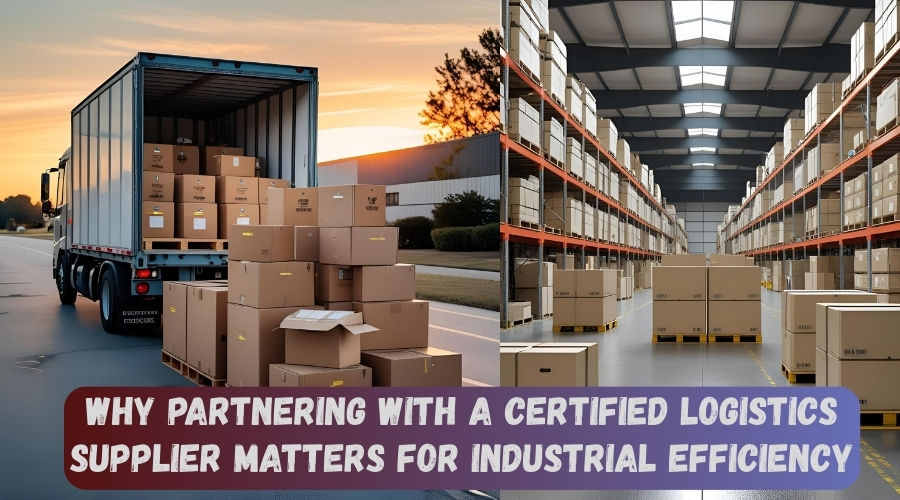What is a Merge Conveyor System and How Does It Work?
- thautomate
- Apr 4
- 5 min read

In modern manufacturing and distribution centers, efficient material handling is critical. One technological innovation that has transformed production lines and automated warehouses is the merge conveyor system. But what exactly is a merge conveyor system, and how does it work? In this comprehensive guide, we'll dive deep into the purpose, design, and functionality of merge conveyor systems, exploring their benefits, applications, and factors to consider when implementing one in your facility.
Understanding the Basics of Conveyor Systems
Before delving into merging conveyor systems, it's essential to understand the general concept of conveyor systems. These systems move materials or products from one point to another using conveyance techniques, such as belts, rollers, or chains. They are crucial in streamlining manufacturing, packaging, and distribution processes. A well-designed conveyor system minimizes manual handling, reduces labor costs, and improves efficiency.
What is a Merge Conveyor System?
A merge conveyor system is a specialized type of conveyor arrangement designed to combine two or more separate streams of products into a single line. This process of merging is essential when the production or distribution process involves multiple parallel lanes that eventually consolidate into one direction for further processing, packaging, or shipping.
Key features of a merge conveyor system include:
Multiple Feeding Lines: The system integrates products coming from different sources.
Synchronization Mechanisms: Sensors and control systems ensure the products merge in the right sequence without collisions.
Streamlined Pathways: The merged output leads to a smooth, uninterrupted conveyor line where the products can be efficiently processed.
The merge conveyor system maximizes space utilization by gathering products from various lanes into one line. It improves the overall flow, reducing bottlenecks in busy production environments.
How Does a Merge Conveyor System Work?
The operation of a merge conveyor system involves several integrated components and processes. Let's break down the key elements that drive its functionality:
1. Multiple Inputs to a Single Output
The primary function of a merge conveyor system is to funnel several streams of items into one cohesive line. Typically, each individual conveyor feeds into a central merging point, which is engineered to handle items coming at different speeds and from different directions.
2. Sensors and Control Units
To ensure a successful merge, the system is equipped with sensors that monitor the items' position, speed, and size on each conveyor. These sensors continuously collect data and relay information to a centralized control unit. The control unit, often managed by a Programmable Logic Controller (PLC), adjusts the speeds of the individual conveyors and orchestrates the merging process. This synchronization helps prevent product collisions and ensures a smooth flow.
3. Adjustable Speed and Spacing
A vital aspect of the merge conveyor system is its ability to adjust speeds dynamically. By fine-tuning the velocity of each conveyor belt, the system ensures that items from one stream do not overcrowd or hinder those from another. Adjustable guides and diverters further assist in aligning the items perfectly for a seamless merge.
4. Physical Merging Mechanism
After synchronization via sensors and controls, items approach the merging zone where physical mechanisms—such as sloped rollers or contoured guide plates—assist in directing products into a unified stream. The design of this merging interface is critical; it must accommodate differences in product size, shape, and spacing while minimizing potential damage to the items.
5. Continuous Flow Management
Once the items have been merged into one stream, the system manages the flow along a single conveyor path. The consolidated line can feed directly into further packaging, inspection, or palletizing processes. Continuous flow management is essential to keep production lines running at optimal speeds, reducing idle time and improving throughput.
Benefits of Using a Merge Conveyor System
Implementing a merge conveyor system in your production environment offers several tangible benefits:
Enhanced Efficiency: By consolidating multiple workflows into a single line, throughput is increased, and production bottlenecks are minimized.
Space Optimization: Merging several conveyors into one reduces the footprint required for material handling systems, freeing up space for additional operations.
Cost Reduction: Fewer manual interventions, reduced labor costs, and improved product handling lead to lower overall operating costs.
Improved Product Flow: Synchronization and seamless merging reduce product jams and collisions, leading to fewer production stoppages.
Flexibility: The modular nature of many merge conveyor systems makes it easy to upgrade or modify the configuration as production requirements evolve.
Applications Across Various Industries
Merge conveyor systems have broad applications in today's industrial environments. Some of the key sectors that benefit include:
1. Manufacturing
In manufacturing facilities, many production lines consist of parallel processes that eventually combine into one line for final assembly or packaging. The merge conveyor system ensures that these independent streams blend efficiently, maintaining a consistent flow of materials without interrupting production.
2. Packaging and Distribution
Warehouses and distribution centers often receive goods from various picking and packing stations. A merge conveyor system can centralize these streams into one main line before shipment, optimizing loading procedures and reducing handling time.
3. Food Processing
In the food processing industry, hygiene and speed are critical. Merge conveyor systems can handle delicate items such as baked goods or frozen products by gradually merging multiple streams while minimizing abrupt movements that may damage the product.
4. Automotive Industry
Automotive assembly lines frequently involve numerous parallel processes that merge parts and components for final assembly. A merge conveyor system ensures the smooth transition of these parts without causing delays or impacting production quality.
Critical Factors to Consider for Optimal Performance
Optimizing a merge conveyor system requires careful planning and regular maintenance. Here are some important considerations for ensuring peak performance:
1. Calibration and Maintenance
Regular calibration of sensors and control systems is essential for maintaining precise synchronization. Scheduled maintenance, including cleaning and inspection of moving parts, helps prevent breakdowns and extends the life of the equipment.
2. Software Integration
Modern merge conveyor systems benefit from advanced software integrated with manufacturing execution systems (MES). Software integration enables predictive maintenance, real-time monitoring, and better control over the merging process, significantly improving efficiency.
3. Customization for Specific Applications
Not all production lines are identical. Work with engineers and manufacturers to customize the merge conveyor system to your operation's specific needs. Consider product size, speed, and layout for a system tailored to your environment.
4. Safety Features
Ensure that the merge conveyor system includes safety features such as emergency stop buttons, safety guards, and automatic shutdown in case of malfunction. Safety is paramount in fast-paced production environments, and integrating rigorous safety protocols can reduce workplace injuries and costly downtime.
5. Scalability and Upgrades
Invest in a scalable system to add merging lines as production demands increase. Many modern systems offer modular upgrades, ensuring the merge conveyor system remains a long-term solution for your evolving facility needs.
Future Trends in Merge Conveyor Systems
The future of merged conveyor systems is driven by innovation in automation, artificial intelligence, and the Internet of Things (IoT). Some emerging trends include:
Smart Sensors: Next-generation sensors offer even higher accuracy and can predict potential issues before they disrupt production.
AI-Driven Optimization: Artificial intelligence will refine the process by learning from production data, optimizing speed settings, and dynamically adjusting merge sequences.
Enhanced Connectivity: With IoT integration, merge conveyor systems provide real-time data to centralized control hubs, allowing for improved decision-making and preventative maintenance.
Energy Efficiency: Future systems are expected to minimize energy consumption while maintaining or enhancing performance, a crucial factor in sustainable manufacturing.
Conclusion
Merge conveyor systems represent a pivotal innovation in automated material handling. By effectively combining multiple streams of products into a single, coordinated flow, these systems help improve production efficiency, reduce operational costs, and optimize space in increasingly competitive manufacturing environments. Whether you're in the automotive, food processing, packaging, or any other industry that relies on streamlined production processes, understanding how a merge conveyor system works is essential to harnessing its full potential.
Regular calibration, maintenance, and integration with modern control systems remain critical to ensuring these systems perform at their best. Meanwhile, trends such as AI, IoT, and enhanced energy efficiency promise to further transform the capabilities and benefits of merged conveyor systems.
Partnering with a trusted merge conveyor system can be the key to unlocking higher productivity and operational excellence for manufacturers looking to upgrade their production lines with innovative and reliable technology.



Comments